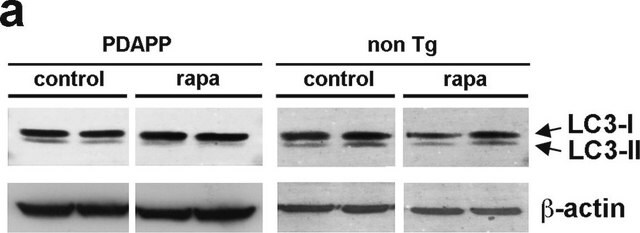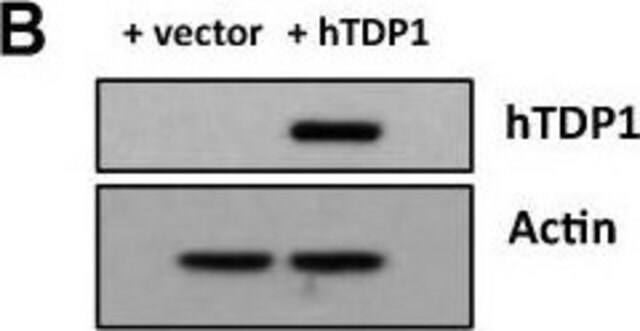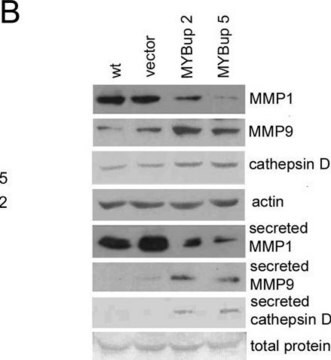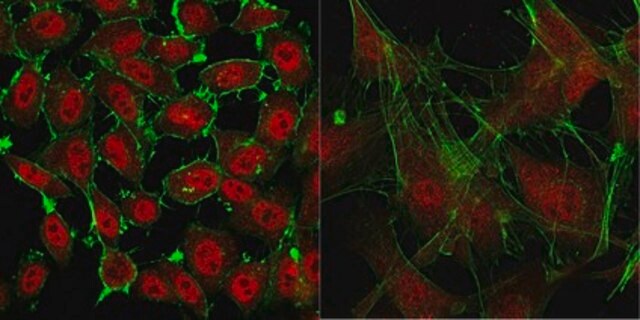CP01
Anti-Actin (Ab-1) Mouse mAb (JLA20)
liquid, clone JLA20, Calbiochem®
About This Item
Prodotti consigliati
Origine biologica
mouse
Livello qualitativo
Forma dell’anticorpo
ascites fluid
Tipo di anticorpo
primary antibodies
Clone
JLA20, monoclonal
Stato
liquid
contiene
≤0.1% sodium azide as preservative (actin antibody only, CP01-100UL)
Reattività contro le specie (prevista in base all’omologia)
all
Produttore/marchio commerciale
Calbiochem®
Condizioni di stoccaggio
OK to freeze
Isotipo
IgM
Condizioni di spedizione
wet ice
Temperatura di conservazione
−20°C
modifica post-traduzionali bersaglio
unmodified
Informazioni sul gene
human ... ACTB(60)
Categorie correlate
Descrizione generale
Immunogeno
Applicazioni
Immunofluorescence (1:10000, see application references)
Recomended dilution for secondary antibody (0.05 µg/ml, 1:2000 dilution)
Attenzione
Stato fisico
Ricostituzione
Risultati analitici
All animal cell lines
Altre note
Lin, J.J. 1982. Cold Spring Harbor Symp. on Quant. Biol.46, 769.
Lin, J.J. 1981. Proc. Natl. Acad. Sci.78, 2335.
Goldman, R.D., et al. 1979. Ann. Rev. Physiol.41, 701.
Goldman, R., et al. (eds.) 1976. Cold Spring Harbor Conference on Cell Proliferation, Books A-C.
Note legali
Non trovi il prodotto giusto?
Prova il nostro Motore di ricerca dei prodotti.
Codice della classe di stoccaggio
11 - Combustible Solids
Classe di pericolosità dell'acqua (WGK)
WGK 1
Punto d’infiammabilità (°F)
Not applicable
Punto d’infiammabilità (°C)
Not applicable
Certificati d'analisi (COA)
Cerca il Certificati d'analisi (COA) digitando il numero di lotto/batch corrispondente. I numeri di lotto o di batch sono stampati sull'etichetta dei prodotti dopo la parola ‘Lotto’ o ‘Batch’.
Possiedi già questo prodotto?
I documenti relativi ai prodotti acquistati recentemente sono disponibili nell’Archivio dei documenti.
Il team dei nostri ricercatori vanta grande esperienza in tutte le aree della ricerca quali Life Science, scienza dei materiali, sintesi chimica, cromatografia, discipline analitiche, ecc..
Contatta l'Assistenza Tecnica.








